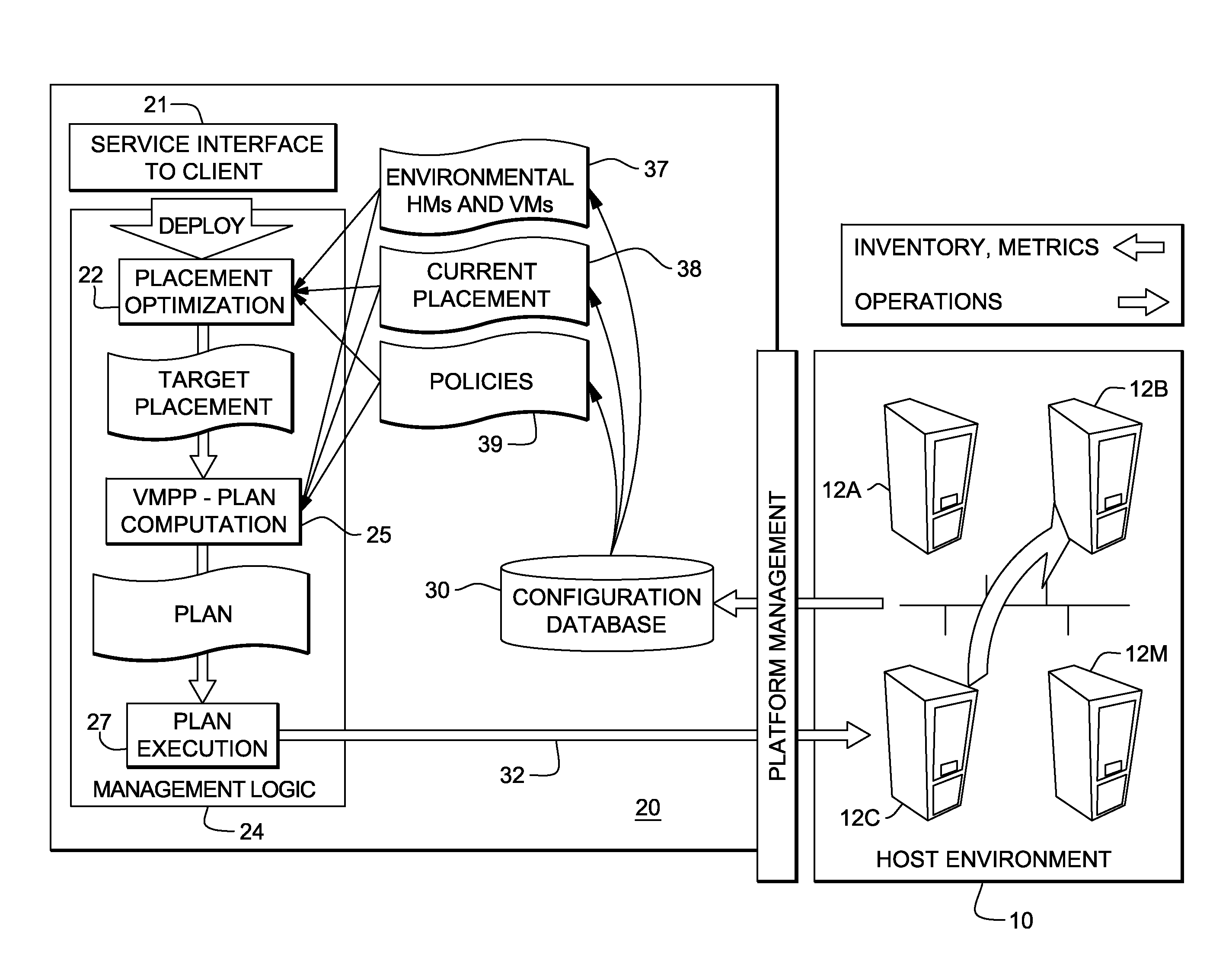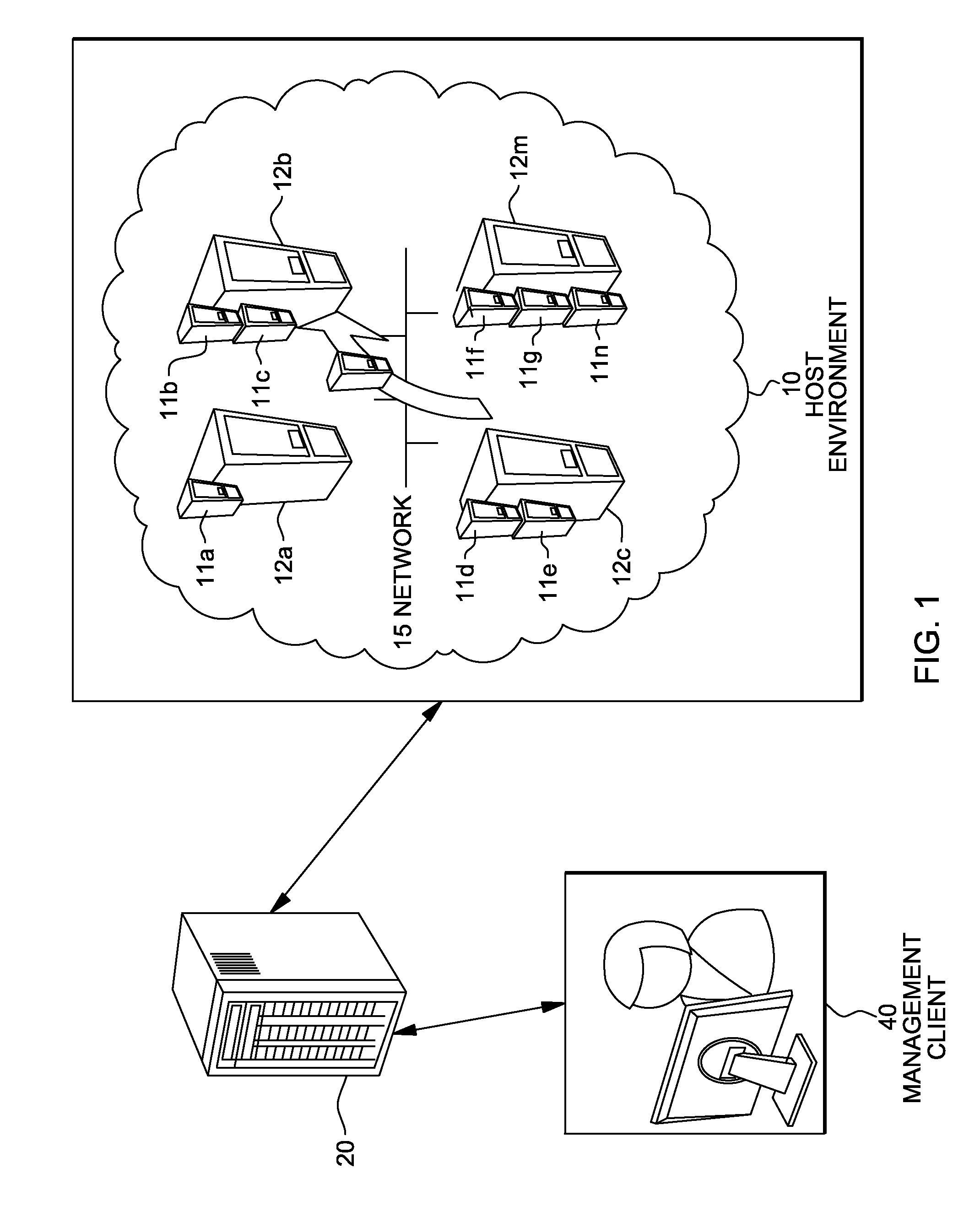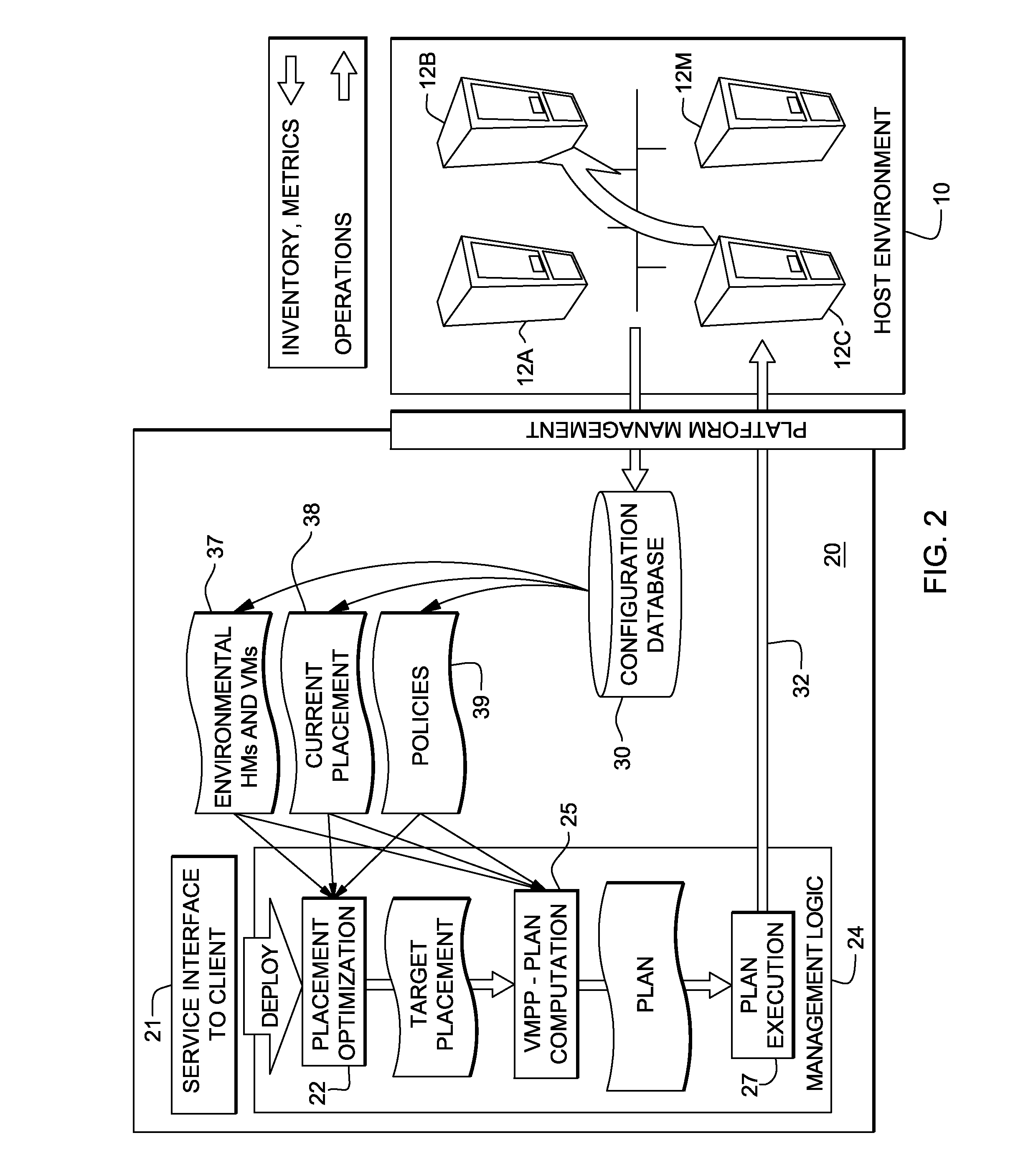System and method for deploying virtual machines in a computing environment
a computing environment and virtual machine technology, applied in the field of system and method for deploying virtual machines in the computing environment, can solve the problems of lack of logic for generating vm-specific operations, inability to detect or resolve referenced techniques, and no known products
- Summary
- Abstract
- Description
- Claims
- Application Information
AI Technical Summary
Benefits of technology
Problems solved by technology
Method used
Image
Examples
first embodiment
[0132]FIG. 7A depicts an example of an abuse strategy of a first embodiment that works by un-placing a VM, that is, making it release its allocated resources at its current host without being relocated to another host. The example implementation of select_abuse( ) 91 function in FIG. 7A implements this strategy. The function takes a single parameter SV which is the set of candidate VMs to choose from. In step 1 of the select_abuse( ) 91 function in FIG. 7A, the function tries to first select a candidate VM v that holds resources on a host (i.e., mcp(v)≠@) and that can tolerate suspension of its operation (i.e., liveMigrate(v)=FALSE). If it finds such a VM of the select_abuse( ) 91 function in FIG. 7A, (step 2), that VM is returned (step 2.1 of the select_abuse( ) 91 function in FIG. 7A). Otherwise, it tries in step 3 of the select_abuse( ) 91 function in FIG. 7A to find any VM that holds resources. If such a VM is found (step 4 of the select_abuse 91 function in FIG. 7A), it is retu...
second embodiment
[0133]FIG. 7B presents yet another example of an abuse strategy of a by relocating VMs to HMs hosts) outside the cycle, so that the abused VM's operation does not have to be temporarily suspended. The hosts are picked out of a predefined set PH. The set PH could be a predefined dedicated pool of backup servers that are reserved for such use, or it could be a set that was dynamically constructed during the operation of the algorithm, e.g., by adding every HM h with in(h)==0 to PH (step 7 of the preparation sequence described supra, and step 3.3.3 of the main portion of algorithm 50 in FIG. 3). In any case, PH should not contain hosts that part of the graph at the time the abuse operation is invoked, so that using its hosts for abused VMs may not generate additional migration cycles. Note that this abuse strategy will try to place each candidate VM at a HM out of PH, so it is more costly in terms of time complexity compared to the un-place strategy. However, if migration cycles are ex...
PUM
 Login to View More
Login to View More Abstract
Description
Claims
Application Information
 Login to View More
Login to View More - R&D
- Intellectual Property
- Life Sciences
- Materials
- Tech Scout
- Unparalleled Data Quality
- Higher Quality Content
- 60% Fewer Hallucinations
Browse by: Latest US Patents, China's latest patents, Technical Efficacy Thesaurus, Application Domain, Technology Topic, Popular Technical Reports.
© 2025 PatSnap. All rights reserved.Legal|Privacy policy|Modern Slavery Act Transparency Statement|Sitemap|About US| Contact US: help@patsnap.com



